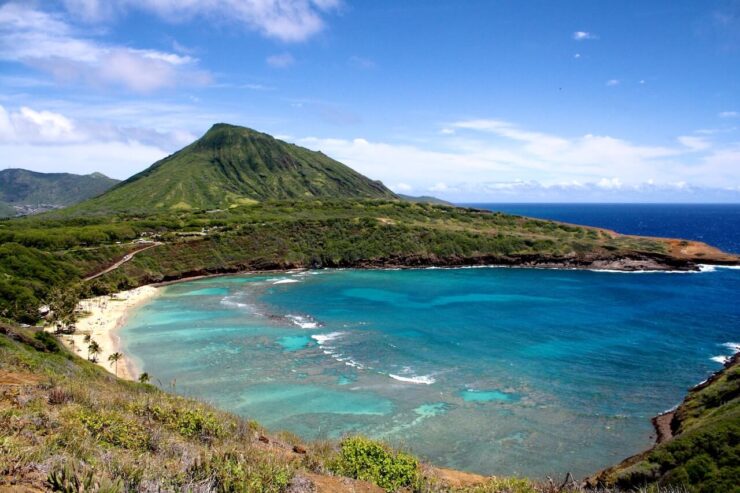Hawaii is well-known for its beautiful beaches, lush landscapes, and abundance of ocean activities like snorkeling and scuba diving. What many visitors may not realize is that a significant portion of Hawaii’s coastline falls under protected marine sanctuaries designed to preserve the diverse marine ecosystems around the islands.
These sanctuaries offer some of the best ocean wildlife viewing opportunities while promoting sustainable tourism and recreation. This article explores the top spots to go snorkeling and diving within Hawaii’s sanctuaries and how to enjoy these adventures in an eco-friendly way.
Respecting Hawaii’s Marine Sanctuaries
There are multiple marine sanctuaries scattered amongst the main Hawaiian islands. Some of the most important to know about are the Hawaiian Islands Humpback Whale National Marine Sanctuary, which protects the habitats of humpback whales as they migrate to Hawaii each winter to breed, give birth and nurse their young; and the Northwestern Hawaiian Islands Marine National Monument, which stretches across 1,100 miles and protects one of the most biodiverse coral reef ecosystems in the world.
When exploring any of Hawaii’s sanctuaries, follow all regulations to prevent damage to the ecosystems and marine life. Practicing ocean-friendly habits like not touching reef or wildlife, wearing reef-safe sunscreen, and properly disposing of all trash on land prevents unnecessary harm.

Top Snorkeling Destinations
One of the best ways to explore Hawaii’s impressive marine life is to spend a day snorkeling at one of the protected bays or coves. Hanauma Bay Nature Preserve on Oahu offers an extensive reef system right from the shore, with over 400 species of fish frequenting the bay.
See butterflyfish, parrotfish, surgeonfish and more, along with occasional sea turtles, rays, and reef sharks. Molokini Crater is a crescent moon-shaped islet off the southern coast of Maui ideal for seeing colorful tropical fish, manta rays and even small reef sharks if you’re lucky.
For great odds of spotting sea turtles, head to Puako tidepools and beaches on the Big Island of Hawaii, located within the boundaries of the Puako Petroglyph Archaeological District. This designated sanctuary features a high density of green sea turtles that often come close to shore to feed and bask on the beach.
World-Class Scuba Diving
Scuba divers have plenty to get excited about when exploring Hawaii’s protected sanctuaries too. Some of the most coveted dive spots lie hidden along the islands’ shorelines and just offshore. At Kona’s famous manta ray night dives, divers plunge into the inky darkness surrounded by up to 100 giant mantas performing mesmerizing acrobatics to feed on plankton attracted by bright lights.
Molokini Crater’s back wall and reef drop-off entices divers with caves, arches, and overhangs swirling with marine life like angelfish, parrotfish, and Hawaiian green sea turtles. For an unforgettable experience diving with manta rays during the day, try Garden Eel Cove at Maui’s Makena Beach State Park reef. Get up close with the gentle giants as they glide by or pause to be cleaned by wrasses.
How to Adventure Responsibly in Hawaii’s Marine Sanctuaries
The best way to ensure your ocean adventures do not disturb Hawaii’s sanctuaries is by booking with reputable, eco-conscious tour operators that follow safe marine wildlife practices and educate guests on protecting the sanctuaries. Choose companies using boats with quiet, low-emission motors and that actively reduce single-use plastics. Look for operators that split large groups into smaller sizes with expert guides so you have a more intimate, educational experience.
Well-managed sanctuaries rely heavily on user fees, so paying park entrance or tour fees helps fund conservation programs to preserve Hawaii’s marine habitats. Most importantly, follow all protected area rules and your guide’s instructions on how to avoid harming marine life and reefs while snorkeling or diving. By being an informed, responsible ocean adventurer, you get to enjoy all that Hawaii has to offer while helping safeguard its uniqueness for generations to come.
Snorkeling and diving within Hawaii’s marine sanctuaries offers adventurers opportunities for world-class ocean experiences in incredibly biodiverse habitats. By respecting regulations put in place to protect wildlife and reef systems and choosing responsible tour operators, visitors play an important role in maintaining the health of Hawaii’s sanctuaries.
So, grab your snorkel gear or scuba tank and prepare for exhilarating, eco-friendly encounters with sea turtles, vibrant coral reefs, manta rays and more as you explore the underwater treasures of Hawaii’s protected sanctuaries.
